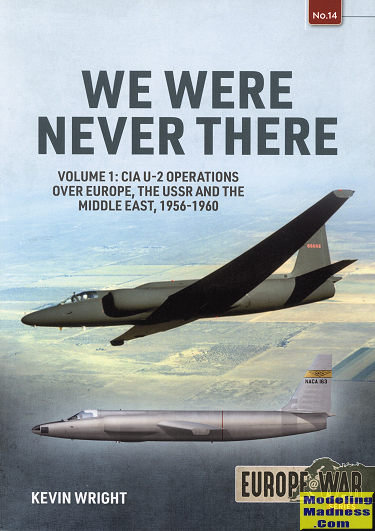 After WWII, it
was fairly obvious that the Soviet Union was going to return to its old
adversarial ways when it came to the western powers. Since it was a police
state, getting any sort of information about their military was difficult to say
the least. The best way was to use fairly fast jets, which would make incursions
into the Soviet Union and eastern Europe. These aircraft would perform photo
recon missions, getting in and out as fast as possible. They generally flew at
the maximum altitude they could and hoped that either they wouldn't be detected
by Soviet radar until their way out or that any fighters scrambled would be
unable to catch them. The majority of types used for this were RB-45s, RB-47s,
and RF-100s.
After WWII, it
was fairly obvious that the Soviet Union was going to return to its old
adversarial ways when it came to the western powers. Since it was a police
state, getting any sort of information about their military was difficult to say
the least. The best way was to use fairly fast jets, which would make incursions
into the Soviet Union and eastern Europe. These aircraft would perform photo
recon missions, getting in and out as fast as possible. They generally flew at
the maximum altitude they could and hoped that either they wouldn't be detected
by Soviet radar until their way out or that any fighters scrambled would be
unable to catch them. The majority of types used for this were RB-45s, RB-47s,
and RF-100s.
These types did well enough from the periphery, but were
unable to do really deep penetration missions to where the Soviets were building
up bomber forces or doing nuclear testing and so on. As time progressed, these
missions became even more hazardous as Soviet radar coverage expanded. What was
needed was a really high flying recon plane that Soviet fighters could not
reach.
Thus the U-2 was developed for the CIA. These planes
flew at very high altitudes where the speed difference between staying aloft and
stalling out was just a few miles per hour. They were lightly built to meet
mission requirements and were basically jet powered gliders. They had the range
required for deep penetration missions and carried a variety of cameras and
other sensors depending on the mission.
The aircraft were piloted by 'civilians' and wore
no national markings. They frequently had bogus registration numbers and were
simply called 'articles'. Though built for the CIA, the USAF also operated the
type, but not on the sorts of overflights as did the CIA. These planes flew from
bases in Germany, the US, Norway, Turkey, and Pakistan, as well as others in the
Pacific.
This volume covers the development of the aircraft, the
different equipment carried, and operations in Europe and the Middle East from
1956 until Gary Powers was shot down on 1 May 1960 and Soviet overflights
stopped. It includes each mission along with many of the photos brought back
from these missions. It also includes how the photos were processed as well as
the usual political situations that are so common with any similar military
operation. It is a superb book that provides the sorts of insights into this
program you won't find elsewhere. Most highly recommended.
June 2022
Copyright ModelingMadness.com. All rights reserved. No
reproduction without express permission.
Review book courtesy of
Casemate Publishing, where you can order your copy
at this
link.
If you would like your product reviewed fairly and quickly, please
contact
me or see other details in the
Note to
Contributors.
 After WWII, it
was fairly obvious that the Soviet Union was going to return to its old
adversarial ways when it came to the western powers. Since it was a police
state, getting any sort of information about their military was difficult to say
the least. The best way was to use fairly fast jets, which would make incursions
into the Soviet Union and eastern Europe. These aircraft would perform photo
recon missions, getting in and out as fast as possible. They generally flew at
the maximum altitude they could and hoped that either they wouldn't be detected
by Soviet radar until their way out or that any fighters scrambled would be
unable to catch them. The majority of types used for this were RB-45s, RB-47s,
and RF-100s.
After WWII, it
was fairly obvious that the Soviet Union was going to return to its old
adversarial ways when it came to the western powers. Since it was a police
state, getting any sort of information about their military was difficult to say
the least. The best way was to use fairly fast jets, which would make incursions
into the Soviet Union and eastern Europe. These aircraft would perform photo
recon missions, getting in and out as fast as possible. They generally flew at
the maximum altitude they could and hoped that either they wouldn't be detected
by Soviet radar until their way out or that any fighters scrambled would be
unable to catch them. The majority of types used for this were RB-45s, RB-47s,
and RF-100s.